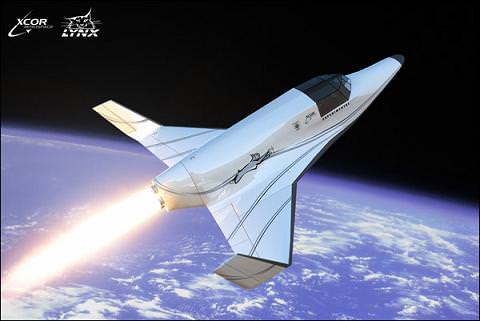[/caption]
NASA Deputy Administrator Lori Garver announced today the space agency will fund dozens of science and education payloads to fly on commercial suborbital vehicles. If the 2011 budget proposed by President Obama passes, NASA will commit $75 million in funding over five years for the new Commercial Reusable Suborbital Research program (CRuSR). “For everyone who has dreamed of participating in the grand adventure of spaceflight, this $75 million commitment marks the dawn of a new space age,” said Alan Stern chair of the Commercial Spaceflight Federation’s Suborbital Applications Researchers Group (SARG) and former NASA associate administrator for science. “As the commercial space industry continues to grow, I expect that we will see increasing numbers of payloads and people flying to space.”
Garver made the announcement at the first annual Next-Generation Suborbital Researchers Conference in Boulder, Colorado. Money for payloads means money available for companies like Armadillo Aerospace, Blue Origin, Masten Space Systems, Virgin Galactic, and XCOR Aerospace.
“We are thrilled to see NASA recognizing the enormous potential of new commercial vehicles for science, research, and education,” said Mark Sirangelo, Chairman of the Commercial Spaceflight Federation. “NASA Deputy Administrator Garver’s announcement today means that hundreds of scientists, educators, and students will be able to fly payloads on these new commercial vehicles.”
NASA is proposing to spend $15 million in each of five years from 2011-2015 for the CRuSR program, funds that will both go to universities and other research institutions to build science and education payloads, as well as being used to purchase flights on commercial suborbital vehicles.
“Since this new generation of commercial vehicles are low cost, NASA’s $75 million will open the floodgates for everyone from astronomers to high school classrooms to conduct real science in space,” said STern. “This will be one of the best investments NASA has ever made.”


That is interesting. At least one of those companies (Virgin Galactic) is posed to benefit in a mature way from that time period, I think.
The others are by all observational indications, pipe dreams as of this moment. They will still benefit from attracting these and other and investments. Whether of not they are actually going to test hardware, I expect, in the manner of true commercial pipe dreams everywhere.
And who knows, maybe VG will get an actual competitor in this market segment over time. (Probably not within this time frame though.) That would be good.
This gets me thinking. If VG is still seriously considering to spin of some ‘subspace’ tourism business to Spaceport Sweden in Kiruna, us europeans better get something similar off the ground, so to speak, to support the markets fairly. That would be nice too.
[Though I suspect some of the local science collective goes “been there, done this” with sounding rockets. Pity in some ways that experiment automation is so successful.]
Looks like a 21st manifestation of the Dyna-Soar program by the Air Force.
Erratum: “…21st century manifestation…”
It is not even close to LOE, and so far I do not know any airliner doing scientific projects.
New materials is key.. foamed metals from zero Gee foundry works comes to mind right away…
How about ‘doped foamed metals’? To line yer plasma jet with..